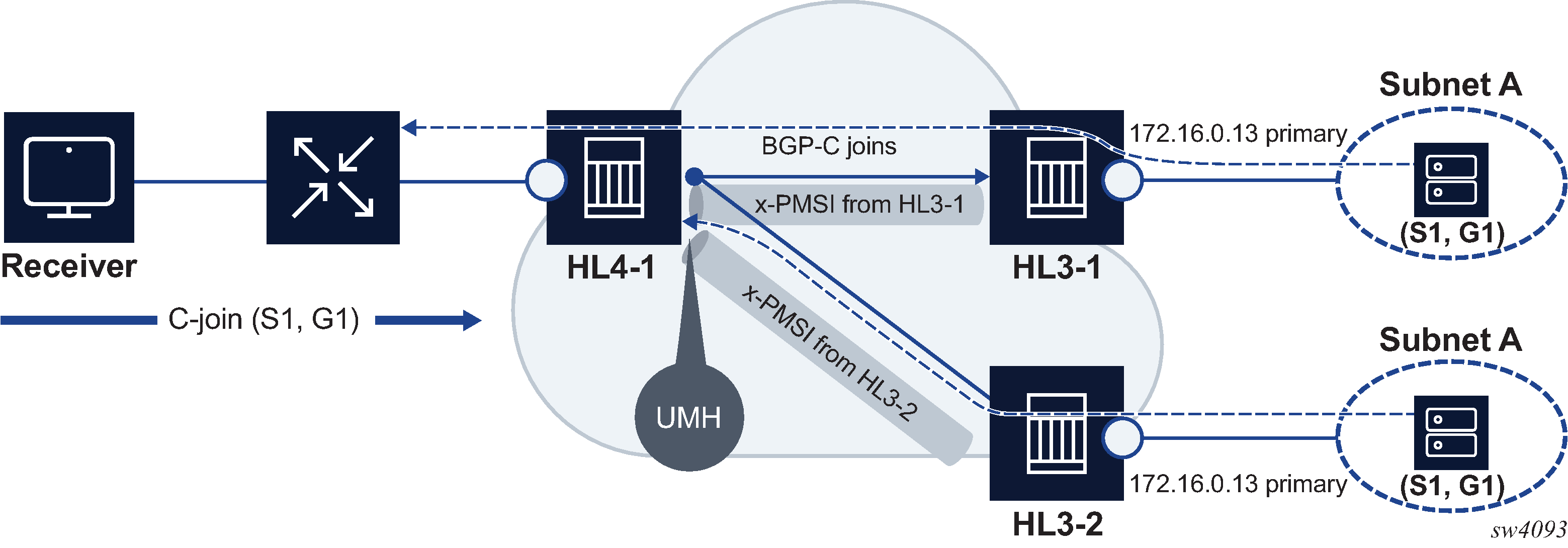Bandwidth monitoring is used in MVPN for NG-MVPN and mLDP transport. It is used for multicast source redundancy, where both sources have the same IP address but are connected to two different root nodes. Bandwidth monitoring can be used with basic or recursive mLDP FEC. UMH redundancy for bandwidth monitoring is supported for mLDP basic FEC and recursive FEC type 7 and 8 only.

With bandwidth monitoring, the leaf node sends a single (S1,G1) join to both root nodes. PIM SSM and ASM can be used between the receiver and the leaf, or between the UMH and the source. For ASM, bandwidth monitoring works only when traffic is switched from <*,G> to <S,G>.
After the source starts the multicast flow toward the root PEs, both root nodes transport the traffic to the leaf node on the PMSI (I-PMSI or S-PMSI).
The leaf listens to the active PMSI, blocks the other PMSI, and monitors the traffic rate on both the active and inactive PMSI. For faster than 50 ms switchover, both the active and the inactive PMSIs must arrive on the same IOM, because a single IOM must make the decision about which PMSI the leaf will listen to and which PMSI to block.
The threshold for the rate of traffic lost between the active PMSI and the inactive PMSI is configured on the leaf PE. If the rate exceeds the configured value, the traffic switches from the active PMSI to the inactive PMSI. Rate monitoring is per PMSI, and not per (C-S,C-G).
After the active PMSI traffic rate is stored, there is a revertive behavior, which has a configurable timer. The revertive timer starts after the active PMSI traffic is recovered. When the timer expires and the primary PMSI traffic is stable, the traffic is switched back to the primary path. If the traffic goes below the threshold while the timer is decrementing, the timer is reset. This feature supports 1K of PMSI switchovers within 50 ms.